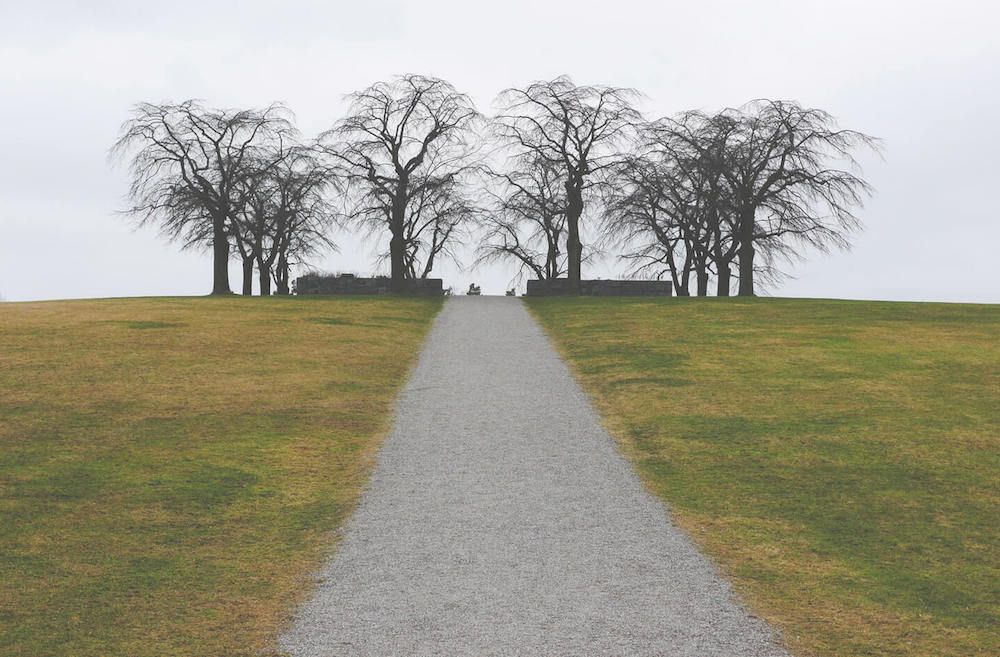Graveside Service
Jewish Graveside Service
Burial Customs
The graveside service can either exist on its own or it can be the final phase of a traditional Jewish funeral ceremony.
If you choose the graveside service to exist on its own the ceremony can be a bit more extravagant, but regardless there are some traditional Jewish burial customs to keep in mind.
- Burial in the ground (k’vurah b’karka) is the most important part of the funeral. Therefore, all guests should try to “accompany the deceased” (levayah) to the cemetery.
- When you arrive at the cemetery, refrain from greeting the grieving family. They will take their seats, and the guests should stand behind them.
- The pallbearers carry the casket from the hearse to the gravesite. For some communities, the pall bearers momentarily stop seven times to say prayer. The main reason for this custom is to recognize that this is a difficult task and there is no rush to complete it.
- A rabbi or officiant will lead the group in a series of prayers including the Mourners Kaddish. Different rabbis have different standards and practices they follow, so take instructions accordingly.
- Once the casket is lowered into the grave, it is a tradition for each of the guests to participate in the actual burial by placing a handful of soil onto the casket.
- After the graveside service has ended, the guests form two rows. In this way the guests create a sheltered walkway for the bereaved family to walk through. As the family walks by, say the traditional words of consolation, “Hamakom y'nachem etchem b'toch sh'ar availai tziyon ee yerushalayim”. You can also say these words in English if you feel like you may mispronounce them, “May the Almighty comfort you among all the mourners of Zion and Jerusalem.” Do not approach the family; simply recite the words as they pass. However, if they approach you, it is acceptable to respond with a gentle hug and comforting words.
- Under strict Jewish burial customs, women exit the gravesite first followed by men.
Jewish Caskets
Jewish laws tell us the deceased should be buried in a casket that is made completely out of wood – with no metal or nails. These caskets are often referred to as kosher caskets. The reason for kosher caskets aligns with the overall Jewish perception of keeping the entire funeral as simple as possible.
Jewish Cemeteries
Jewish cemeteries are considered holy and even have special ceremonies upon their opening. One of the first priorities of a new Jewish community is to establish a cemetery. Jewish cemeteries are usually purchased and operated on communal funds. Jewish cemeteries can be referred to in many different ways in Hebrew:
- bet kevarot - house of tombs
- beit almin or bet olam - house of eternity
- bet chayyim - house of the eternal life
- bet shalom - house of peace
Sources:
Black, J. (2019). What to expect at a Jewish funeral. Retrieved from https://reformjudaism.org/what-expect-jewish-funeral
Goldstein, Z. (2014). After the burial in Judaism. Retrieved from https://www.chabad.org/library/article_cdo/aid/368098/jewish/After-the-Burial-in-Judaism.htm
Klug, L. (2014). Jewish funeral customs: Saying goodbye to a loved one. Retrieved from https://www.jfedgmw.org/jewish-funeral-customs-saying-goodbye-to-a-loved-one
Wolfson, R. (2019). Jewish funerals: When you go. Retrieved from https://www.myjewishlearning.com/article/going-to-a-jewish-funeral/
Phone: 847-478-1600
Goldman Funeral Group
195 N. Buffalo Grove Road
Buffalo Grove
IL
60089
Fax: 847-478-1616
Phone: 847-478-1600
Skokie Chapel
8851 Skokie Boulevard
Skokie
IL
60077
Fax: 847-478-1616


